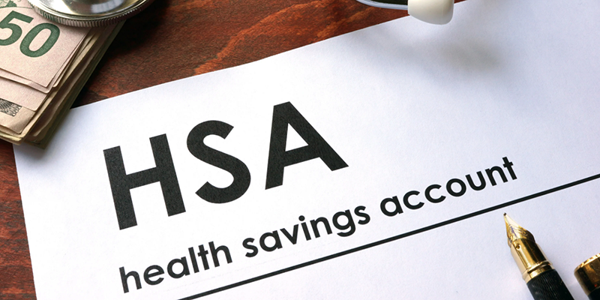How To Minimize Taxes On Retirement Savings
Are you worried about losing a chunk of your hard-earned retirement savings to taxes? You're not alone. Many retirees pay more taxes than necessary simply because they don't have a strategic plan.

The good news? With thoughtful tax planning, you can keep more of your savings and make your money last longer. Here's how to minimize taxes on your retirement savings while complying with IRS rules.
Choose The Right Retirement Accounts
Not all retirement accounts are taxed the same way. Choosing the right mix can make a huge difference.
Traditional 401(k) & IRA
Contributions are tax-deductible, but withdrawals in retirement are taxed as regular income.
Roth IRA & Roth 401(K)
Contributions are made with after-tax dollars, but withdrawals (including earnings) are tax-free in retirement.
Health Savings Account (HSA)
Offers triple tax benefits—tax-deductible contributions, tax-free growth, and tax-free withdrawals for qualified medical expenses.
Smart Move
If you expect to be in a higher tax bracket in retirement, focus on Roth accounts to lock in today's lower tax rate. Traditional accounts may be more beneficial if you wish to be in a lower bracket.
Take Advantage Of Roth Conversions
A Roth conversion allows you to move money from a Traditional IRA or 401(k) into a Roth IRA. You’ll pay taxes on the converted amount now, but your money will grow tax-free from that point forward.
This strategy is ideal if:
• You expect your tax rate to increase in the future.
• You have a year with a lower income, allowing you to convert at a lower tax rate.
• You want to reduce future Required Minimum Distributions (RMDs).
Pro Tip
Convert smaller amounts over several years to avoid jumping into a higher tax bracket.
Plan For Required Minimum Distributions (RMDs)
Once you turn 73, the IRS requires you to withdraw from Traditional IRAs and 401(k)s—whether you need the money. These withdrawals are taxed as income and can push you into a higher tax bracket.
To minimize RMD taxes:
Delay Withdrawals
If you’re still working, check if your employer allows RMD deferral from your 401(k).
Convert To A Roth IRA
Roth IRAs don’t have RMDs, so you can let your money grow tax-free for as long as you want.
Use RMDs Wisely
Consider using them for qualified charitable distributions (QCDs) to avoid taxes (more on this below).
Use a Health Savings Account (HSA)
An HSA is one of the best tax-saving tools for retirees. If you have a high-deductible health plan (HDHP), you can contribute pre-tax dollars, let them grow tax-free, and withdraw them tax-free for medical expenses.

• After age 65, you can use HSA funds for any expense without penalty (but non-medical withdrawals are taxed as income).
• After age 65, you can use HSA funds to pay for Medicare premiums, long-term care insurance, and out-of-pocket medical costs.
Tax Tip
Max out HSA contributions while working ($4,150 for individuals, $8,300 for families in 2024, plus a $1,000 catch-up for those 55+).
Make Tax-Free Charitable Donations
If you don't need all your RMDs, you can donate up to $100,000 per year tax-free to a qualified charity through a Qualified Charitable Distribution (QCD).
• This counts toward your RMD but isn’t included in your taxable income.
• It's an excellent strategy for reducing your tax bill while supporting a cause you care about.
Be Strategic About Social Security Taxes
Did you know that up to 85% of your Social Security benefits can be taxed depending on your total income?
To reduce taxes on Social Security:
Delay Claiming Benefits
If possible, wait until age 70 to maximize your monthly payments.
Withdraw From Roth Iras First
Roth IRA withdrawals don’t count toward your taxable income, helping you stay under Social Security tax thresholds.
Manage Other Taxable Income
Remember how much you withdraw from Traditional IRAs and 401(k)s yearly.
Withdraw Money In The Right Order
The order you withdraw from your accounts affects how much tax you pay. A smart strategy is:
Use taxable accounts first (brokerage accounts, savings, etc.)—capital gains are often taxed at lower rates than ordinary income.
Withdraw from tax-deferred accounts next (Traditional IRA, 401(k))—but only enough to stay in a lower tax bracket.
Tap into Roth accounts last—since these withdrawals are tax-free, let them grow as long as possible.
Move To A Tax-Friendly State
Not all states tax retirement income the same way. Some states don’t tax retirement income at all, including:
• Florida
• Texas
• Nevada
• Tennessee
• Wyoming
If you live in a high-tax state, relocating could save you thousands in retirement taxes.
Work With A Tax Professional
Tax laws change, and every retirement situation is unique. A financial planner or CPA can help you create a customized strategy that minimizes taxes while keeping you compliant with IRS rules.
Harvest Tax Losses To Offset Gains
Tax-loss harvesting can help reduce your overall tax bill if you invest in taxable accounts.
• If you sell an investment at a loss, you can use that loss to offset capital gains from other investments.
• If your losses exceed your gains, you can deduct up to $3,000 per year against regular income and carry excess losses to future years.
Example
You sell a stock at a $5,000 gain and another at a $4,000 loss. Instead of paying taxes on the entire gain, you'll only owe the net $1,000 increase.
Tax-loss harvesting works best in years with significant capital gains, so it's a smart strategy to revisit annually.
Keep More Of Your Retirement Savings
By planning and using innovative tax strategies, you can legally reduce your tax burden and stretch your retirement savings further. From Roth conversions to strategic withdrawals, every little decision adds up.
Start implementing these strategies today, and enjoy a tax-efficient, financially secure retirement! Proper tax planning ensures you keep more of your hard-earned money, giving you greater financial freedom. Stay informed, consult a tax professional if needed, and make the most of every dollar in retirement.











